Water is essential for life, but not all water is safe to use or consume. Water quality—the condition of water based on its chemical, physical, and biological characteristics—plays a critical role in our health, environment, and economy. According to the World Health Organization (WHO), over 2 billion people globally use a drinking water source contaminated with feces. Poor water quality can lead to severe health issues, environmental degradation, and economic losses. In this blog, we’ll explore what water quality is, why it matters, and how we can improve it for a healthier future.
What is Water Quality?
Water quality refers to the suitability of water for specific uses, such as drinking, agriculture, or industrial processes. It is determined by measuring various factors, including:
- pH levels: Indicates how acidic or alkaline the water is.
- Dissolved oxygen: Essential for aquatic life.
- Turbidity: Measures the clarity of water.
- Contaminant levels: Includes bacteria, heavy metals, and chemicals.
Water quality standards vary depending on its intended use. For example, drinking water must meet stricter safety standards compared to water used for irrigation.
Importance of Water Quality
1. Health Impacts
Contaminated water can cause serious illnesses, including cholera, diarrhea, and dysentery. Children and vulnerable populations are particularly at risk.
2. Environmental Impacts
Polluted water harms ecosystems, killing fish and other aquatic life. It can also lead to algal blooms, which deplete oxygen in water bodies and create “dead zones.”
3. Economic Impacts
Poor water quality increases healthcare costs, reduces agricultural productivity, and raises expenses for industries that rely on clean water.
Sources of Water Pollution
- Industrial waste: Chemicals and heavy metals discharged from factories.
- Agricultural runoff: Pesticides and fertilizers that seep into water sources.
- Household sewage: Untreated wastewater from homes.
- Plastic pollution: Microplastics that contaminate oceans and rivers.
- Natural causes: Algal blooms or sedimentation from erosion.
How to Test Water Quality?
Measuring water quality is a critical step in assessing the health and suitability of a water body for certain uses (e.g., drinking, irrigation, industrial uses, etc.). Measurement of water quality usually involves several parameters, including pH, dissolved oxygen (DO), conductivity, turbidity, chlorine levels, heavy metal contaminants, and more. Different measurement methods and instruments are available to help detect different water quality indicators. The following are some of the commonly used water quality measurement methods:
Measurement of pH Value
The pH value indicates the acidity or alkalinity of the water and affects the dissolved gases, minerals and microbial activity in the water. The pH value of water is usually measured using a pH meter. Apure rp3000 measures both ph and orp.
- Insert the pH meter probe into the water sample.
- Read the displayed pH value (typically ranges from 0-14).
- Calibrate the pH meter periodically, using standard buffers (pH 4, 7, 10).
Dissolved Oxygen (DO) Measurement
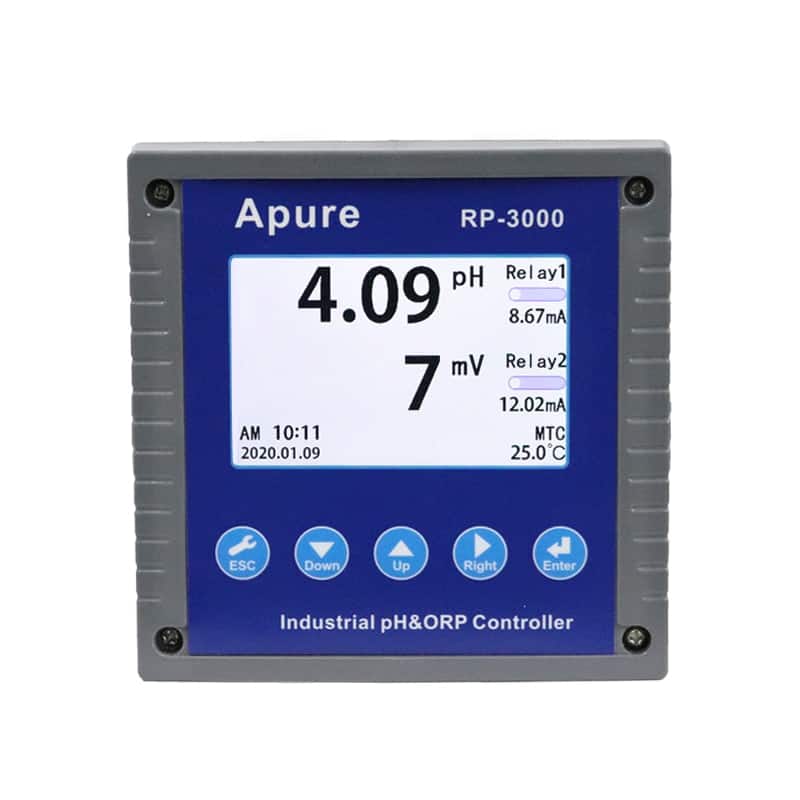
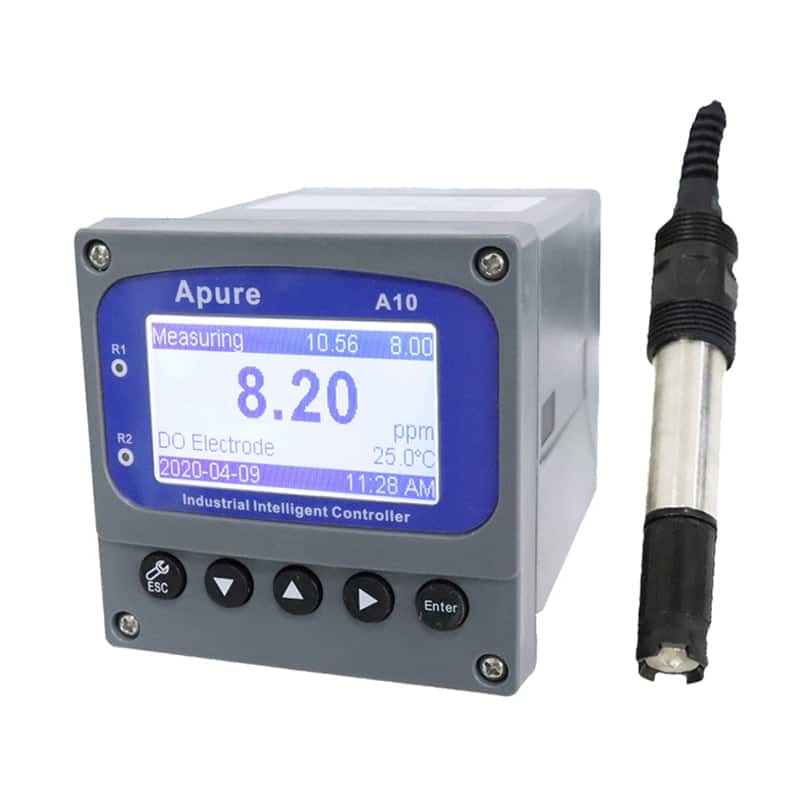
Dissolved oxygen is a measure of the amount of oxygen in a body of water and affects the survival of aquatic organisms. DO is often measured using a DO sensor or an electrode.
- Insert the DO probe into the water sample.
- Dissolved oxygen concentration (usually in mg/L) is read directly from the sensor.
- Record the measurement to monitor the health of the water body.
Conductivity Measurements
Conductivity measures the concentration of dissolved ions in water and is used to understand the total dissolved substance (TDS) concentration of water. Commonly measured with a conductivity meter.
- Insert the conductivity probe into the water sample.
- Read the conductivity value, usually in μS/cm (microsiemens per centimeter) or mS/cm (millisiemens per centimeter).
- Based on the conductivity value, determine if the water contains excessive salts or minerals.
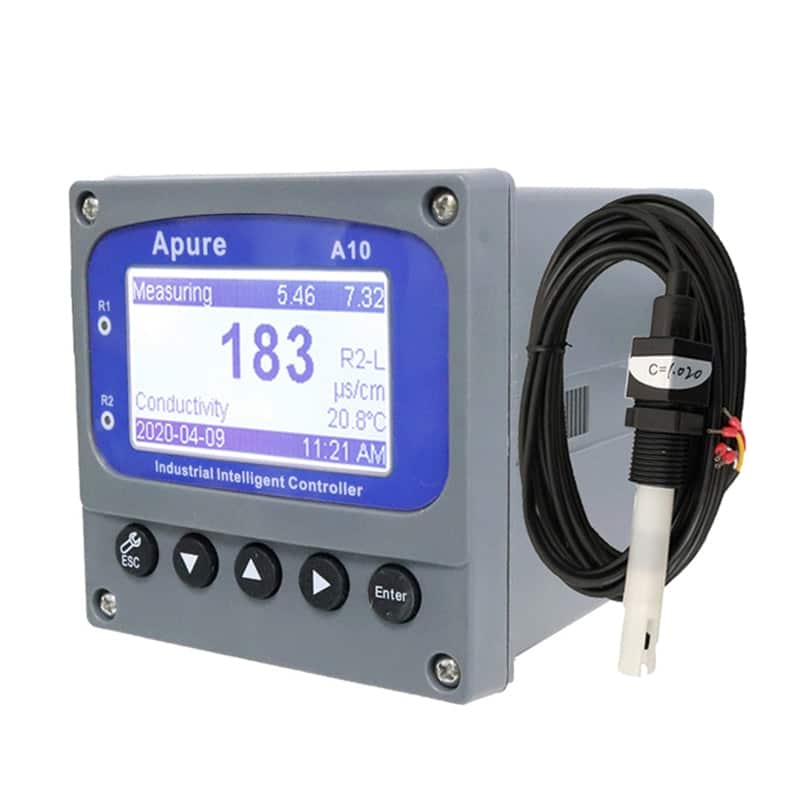
Measurement Of Turbidity
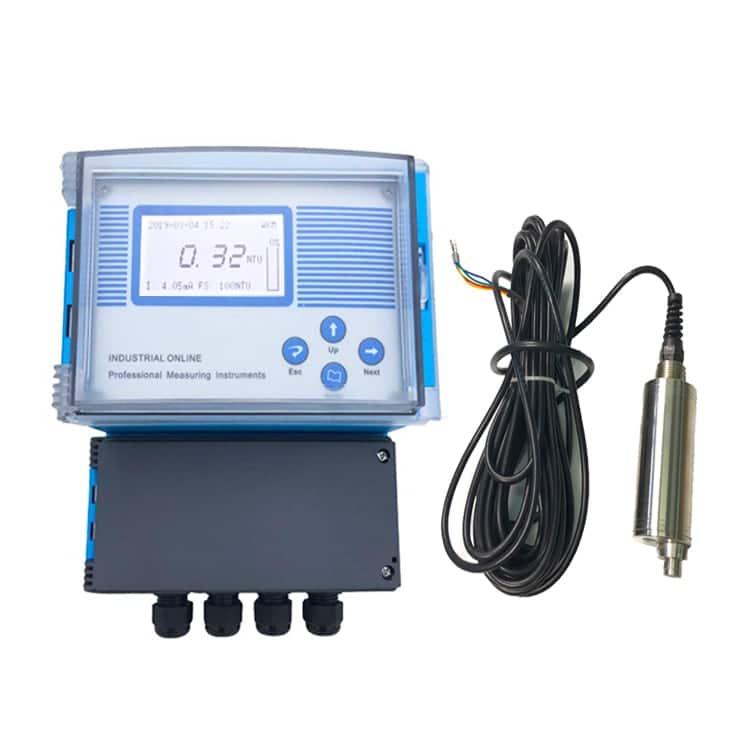
Turbidity is the degree to which suspended matter (e.g., sediment, microorganisms, etc.) in water scatters light and affects the clarity of the water. It is usually measured using a turbidimeter.
- Place the water sample into the tube of the turbidimeter.
- The turbidimeter measures the scattered light from the suspended particles in the water sample through a light source and receiver.
- The turbidity value is read, usually in NTU (Nephelometric Turbidity Units).
Measurement of Chlorine Content
Chlorine levels in water are often used to monitor the effectiveness of disinfection in water treatment processes. Chlorine can be measured by a chlorine analyzer or titration.
- Chlorine analyzers are used to measure the chlorine content of a water sample, which is usually divided into total chlorine and free chlorine.
- Results are usually expressed in mg/L (milligrams per liter).
Titration: Measurement of the free chlorine content of water by titrating a water sample with a chemical reagent.
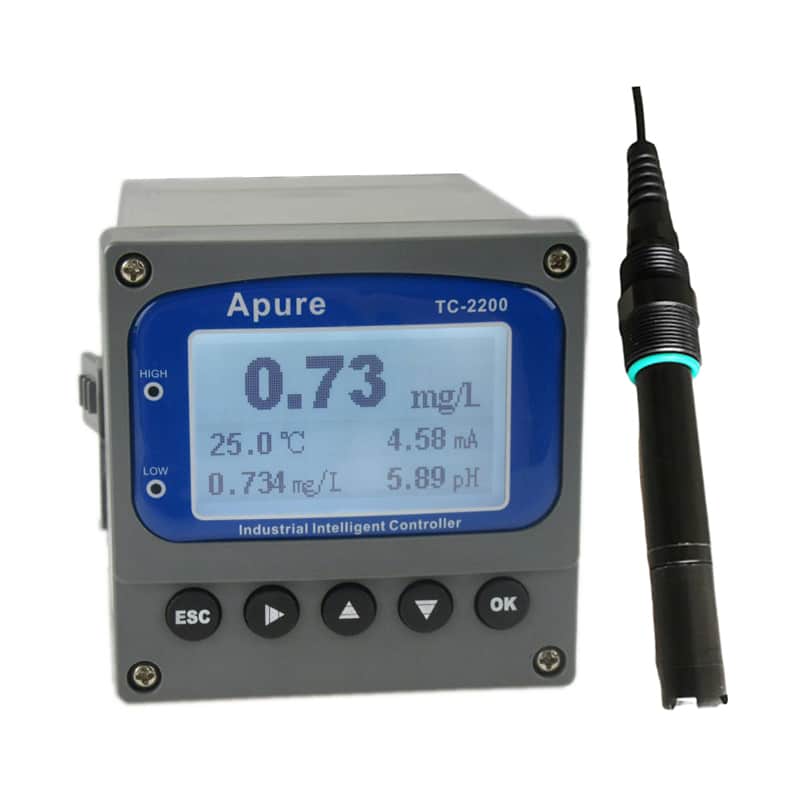
Comprehensive Water Quality Analysis
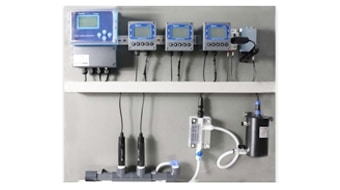
Apure Multi-Parameter Water Quality Analyzer: Suitable for field and laboratory use, capable of monitoring a variety of water quality indicators at the same time, providing comprehensive data support.
How to Improve Water Quality?
Deterioration of water quality is usually associated with the accumulation of pollutants, dissolved matter, pathogenic microorganisms and harmful substances. There are a variety of effective water quality improvement methods that can be used to address different types of water quality problems. The following are common measures to improve water quality:
1. Physical Treatment Methods
Physical treatment methods improve water quality by removing suspended solids or insoluble impurities. These methods are generally simple and rapid but are less effective for removing dissolved pollutants.
Filtration
- Sand Filtration, Activated Carbon Filtration: Removes solid particles, sediments, chlorine, and other pollutants from water through physical filtration.
- Reverse Osmosis (RO): Removes dissolved substances from water using a semi-permeable membrane, suitable for high-precision water treatment needs, commonly used for drinking water purification.
Sedimentation
- Coagulation and Sedimentation: By adding coagulating agents (such as aluminum salts, iron salts), fine particles and impurities in water are aggregated into larger particles, which are then removed through sedimentation.
Ultraviolet (UV) Disinfection
- Uses UV lamps to kill bacteria and viruses in water, particularly common in drinking water and swimming pool water treatment.
2. Chemical Treatment Methods
Chemical methods work by adding chemicals that react with pollutants to change their chemical properties, making them easier to remove or neutralize.
Chlorination
- Chlorine Disinfection: Used to remove harmful microorganisms such as bacteria and viruses from water. This is a common water treatment method.
Ozone Treatment
- Ozone Oxidation: Ozone is a powerful oxidizing agent that can break down organic materials, remove odors, and disinfect water. It is effective in reducing organic pollutants and bacteria in water.
Coagulation
- By adding coagulants (such as polymerized aluminum, polymerized iron), fine particles in water aggregate into larger particles, which are then removed through sedimentation or filtration.
Acid-Base Neutralization
- When the water’s pH is not ideal, acid or base can be used for neutralization, adjusting the pH to the ideal range. For example, sulfuric acid or hydrochloric acid can be added to lower the pH of alkaline water.
3. Biological Treatment Methods
Biological treatment utilizes microorganisms to degrade organic matter and pollutants, commonly used in wastewater treatment and agricultural wastewater treatment.
Activated Sludge Process
- Utilizes microbial communities (such as bacteria and fungi) to break down organic substances in water. This is a common wastewater treatment method. By controlling microbial growth conditions and treatment environments, water quality can be purified.
Phytoremediation
- Uses aquatic plants (such as reeds, cattails) in water quality treatment to absorb nutrients, heavy metals, and other pollutants. Phytoremediation has excellent environmental benefits and is suitable for domestic wastewater treatment.
Biomembrane Process
- Uses biomembranes to treat organic matter in water, suitable for water with high organic pollution. Biomembranes can effectively break down organic pollutants in water.
4. Waterbody Restoration Methods
For polluted water bodies, especially large bodies of water like lakes and rivers, waterbody restoration methods are used to improve water quality and restore ecological balance.
Conclusion
Water quality is a vital issue that affects everyone. By understanding its importance, testing our water, and taking steps to reduce pollution, we can protect our health, environment. Let’s work together to ensure clean, safe water for all.
If you are interested in Apure’s products or water quality monitoring solutions, please feel free to contact our team of experts for advice and support tailored to your needs. Click here to find out more.
